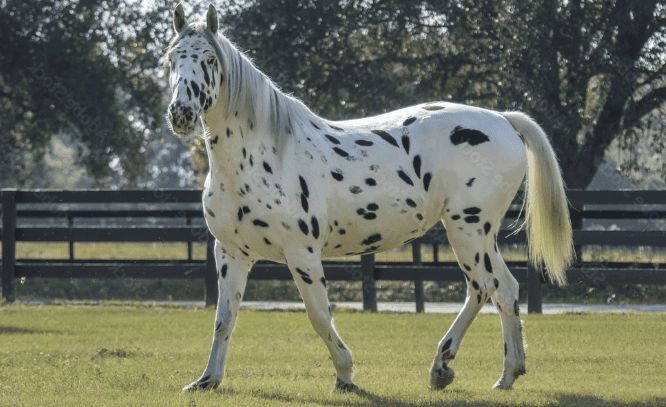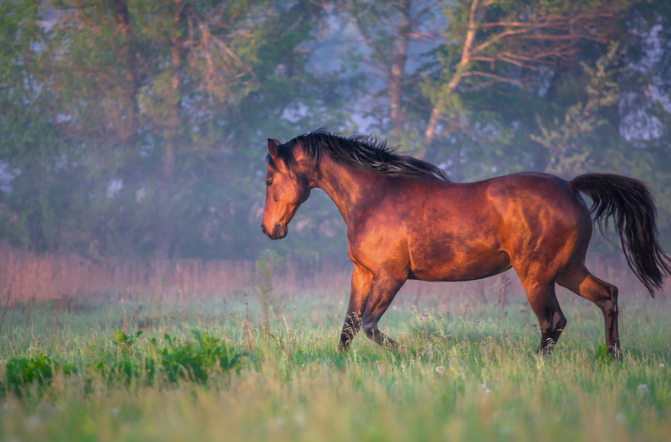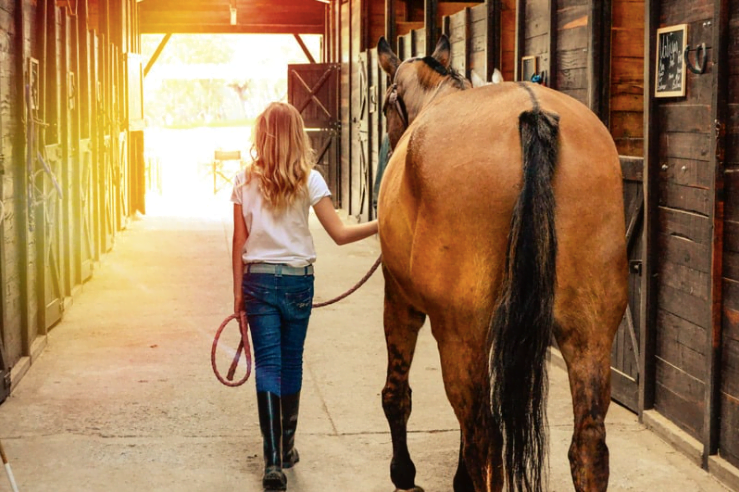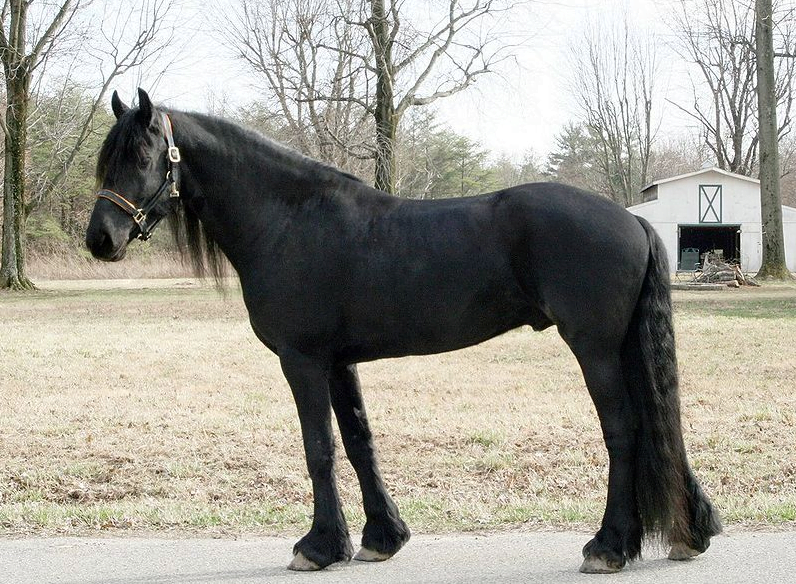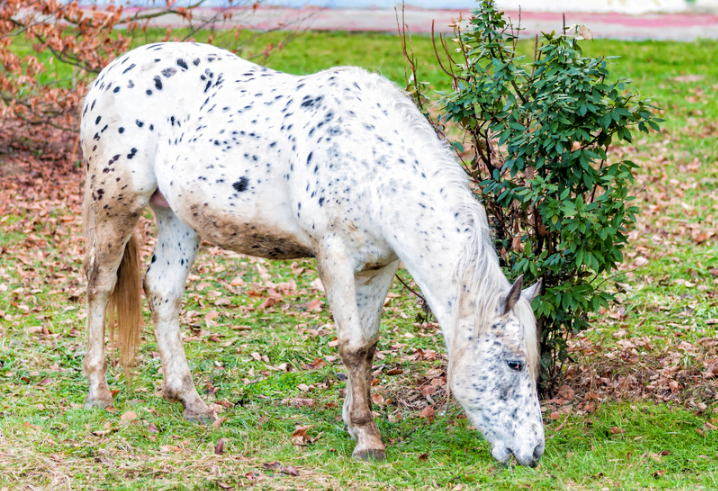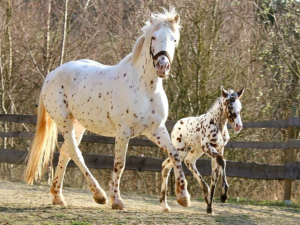Some of the most expensive horse breeds are valued for their appearance, others for their gentleness, and others for their intelligence. Selective breeding is used in order to ensure the survival of bloodlines and the improvement of desirable characteristics.
Each breed has its own characteristics, and prices vary widely between them. In stories, warhorses and plow horses have been immortalized, as have racehorses, wild horses, carriage teams, and dancing horses, among other things.
It is common in mythology to find half-human flying horses and centaurs, and a talking horse was once a well-known television personality. From the Pony Express to traveling circuses, horses have proven to be steadfast companions, tireless “workers,” and legendary performers throughout history.
Horses have been shown to be a part and parcel of human history for thousands of years, and both children and adults still use them. Horses motivate us with their form and beauty, whether they are depicted with or without riders in art and sculpture.
Winning racehorses usually brought in millions of dollars for their owners, while betting on horses has cost millions. Horses have a certain allure about them that makes them seem mysterious.
In our language, horsepower and horse-related expressions such as “horsefeathers” are common. Owning them, on the other hand, is a completely different story. Indulgence, family tradition, business venture, expensive hobby, or necessity for farmers and ranchers are all possibilities for horses.
Some horses are bred specifically for speed, while others are bred for function, strength, and stamina, among other characteristics. The world’s most expensive horse breeds are ranked from most expensive to least expensive.
1). Thoroughbred
Price: There is a huge range: yearlings from top bloodlines can sell for millions of dollars, while yearlings from lesser bloodlines can sell for hundreds of thousands.

The Fusaichi Pegasus, the winner of the Kentucky Derby in 2000, is reputed to be the most costly and expensive horse in history, having sold for $70 million at his death.
Through Keeneland Sales, 174 offspring of a single Thoroughbred sire, Northern Dancer, sold for $160 million over 22 years in the 1970s and 1980s, representing $160 million in value.
Due to this, Thoroughbreds are the most expensive horse breed globally due to this.
The grace and speed of a well-trained racehorse is something that everyone can appreciate. That is precisely what Thoroughbreds are “designed” to do, and no other single breed could compete with them in this regard!
Pricey horses do not always perform as expected on the track, and some that appear to be promising never win a race at all because of the high cost of entry.
That’s exactly what happened with The Green Monkey, a two-year-old colt who was a descendant of Northern Dancer and Secretariat and sold at auction for $16 million in 2006, the highest price ever paid for a two-year-old.
Unfortunately, despite having excellent bloodlines, the horse did not turn out to be a good stud horse.
2). Dutch Warmblood
Approximately $4,000 to several million dollars are within the price range. An approximately 11 million Euros sale was made to a German trainer of a black stallion by the name of Totilas.

The Dutch Warmblood is a very large, impressive horse with a pleasant temperament. It is considered a premium performance breed.
The breed’s size, gait, and demeanor, all bred for jumping and dressage, frequently earn lots of ribbons and accolades at World Equestrian Games or events and Grand Prix competitions worldwide.
As a result of this, the Dutch Warmblood is one of the most expensive horse breeds available for purchase. The modern Dutch Warmblood is descended from two native Dutch breeds, also known as the Gelderlander and the Groningen, which are now extinct.
As a result of the introduction of Thoroughbred blood into the breed, the breed’s stamina and athleticism were improved. There are three types of Dutch Warmblood horse breeds that are recognized today.
They include the athletic sports horse, the elegant harness horse, and the original Gelderland working horse types. These are just a few examples to name. Since it is a relatively new breed, it is still in the process of evolving.
3). Selle Francais
Price ranges from approximately $15,000 to millions of dollars. Palloubet d’Halong, a world champion Selle Francaisen, was reportedly sold for $15 million in 2013 and was one of the horses.

Only in 1958, after several centuries of cross-breeding, was this new French sport horse recognized as a distinct breed rather than a hybrid. The horses, also known as French Saddle Horses, are usually bay or chestnut in color.
It is not uncommon to see white markings on the lower legs. The Selle Francais horses are well-known for their show-jumping power and abilities.
Still, they also excel in various other disciplines, and some have gone on to compete at the Olympics and in Grand Prix competitions.
4). Standardbred
The average price for a Standardbred is $500 to $5,000, with the majority of them falling in between. October this year, the trotting horse yearling Maverick was sold at the auction for a world-record $1.1 million dollars, setting a new auction record.

The American Standardbred might not have the most memorable name of any breed, but it is well-known worldwide. The breed was developed in North America, but its bloodlines can be traced back to the 18th century in England.
Standardbred horses are well-known for their harness-racing ability, which can be demonstrated at either a pace or a trot. They also compete in other types of shows and are used for pleasure riding and competition.
They are heavier than thoroughbreds, with long, muscular bodies that are powerful in the shoulders and hindquarters and the legs, and they have powerful legs. They are cooperative and a good choice for first-time players.
5). Friesian
Between $7,000 and $100,000, depending on the model. A well-trained show horse will cost approximately $40,000, with breeding stallions commanding significantly higher prices.

Friesians breeds are long-lived breeds that originated in the Friesland region of the Netherlands. These breeds are typically solid black with feathered feet and flowing manes and tails, and they are an ancient breed.
They served as mounts for knights during the Crusades because of their strength and versatility.
Friesians, also known as “Dutch trotters,” was introduced to the US for agriculture. They make excellent carriage horses, and some are also excellent in dressage competitions.
6). Hanoverian
Estimated cost: between $7,500 and $100,000.
Hanoverians are elegant horses that were bred to be trainable. Many of them are between 16 and 16.2 hands in height, with powerful limbs and backs and a powerful body.

They are beautiful, athletic steeds that show hunters high prizes because of their distinctive form. When they were first developed in Germany, they were used in agriculture and for military and coach transport, among other things.
Breeders have shifted their focus over the years toward characteristics that distinguish the breed in show jumping and dressage.
7). Oldenburg
Price range: $4,000 to approximately $500,000, depending on the specifics. Elite broodmares and riding horses are commonly sold for more than $100,000, depending on their quality.

Born in Germany and named after Count Graf Anton Gunther von Oldenburg, who competed in dressage, these horses were bred for war and given to rulers and military leaders throughout history.
The breed gained notoriety as graceful riding and carriage horses during the 17th century, and they were in high demand throughout Europe.
Currently, Oldenburgs are jumper stars in international competitions, and they also perform admirably in high-level dressage competitions.
Physically, an Oldenburg is compact but very powerful, with short legs, a long neck, a deep chest, and large hooves, all of which contribute to its power. They are typically dark in color (black, brown, or grey) and have a calm demeanor.
8). Arabian
Price: Prices range from less than $1,000 to more than $150,000. Broodmares can fetch upwards of $30,000, but an Arabian that has been used as a trail horse or as a pet can be sold for as little as $1,000 or even less.

Arabians are perhaps one of the oldest horse breeds still in existence today, and their reputation precedes them.
They are admired and loved for their fortitude and their grace under pressure. It takes time to properly train a young Arabian horse, and it is especially crucial when training a young Arabian.
The horse breed possesses very exceptional intelligence. From its beginning in the late 1800s and early 1900s, this Arabian horse breed has been a very popular cavalry mount, and the breed dominated endurance rides during that period.
The United States Army continued to breed them until well into the 1940s. Humans and horses were both harmed during a period of exploitation that began in the mid-Century.
In 1986, there were more than 110,000 registered owners of purebred Arabians, according to the American Arabian Breeders Association.
Prices fell due to tax law changes, unethical breeders, and other issues affecting the Arabian horse market; some horses were abandoned by their owners due to these issues.
Today, the pendulum has swung back in the other direction, and Arabians are once again regarded as exceptional horses, with prices once again on the rise and the breed’s popularity at an all-time high.
It is no longer fashionable to own a purebred Arabian, but doing so can be a great pleasure! Arabians are currently owned for recreational purposes by nearly 70% of the Arabians in the United States.
9). Holsteiner
From $3,000 to $50,000, depending on the model.

This breed of horse, despite its rarity, is renowned for its outstanding performance and ability — a seemingly natural and effortless affinity for jumping, dressage, and eventing — as well as its pleasant disposition.
The average life expectancy of a Holsteiner, which was originally bred as a multi-purpose utility horse, is 35-40 years.
It is a type of German warmblood horse that possesses powerful and elegant characteristics, and it has been adapted for use in Olympic-level sporting competitions.
It is typically considered a light horse breed, weighing less than 1,500 pounds, and it is well-suited for trail riding and other outdoor activities.
These horses are also well-suited for ranch work and are equally at ease on the racetrack or in the show ring.
10). Andalusian
Price: An Andalusian can cost anywhere from $3,000 to $60,000, but a show-quality Andalusian will typically set you back at least $50,000.

The Spanish Andalusian breed, also known as the Pure Spanish breed, is also one of the oldest known breeds and is considered one of the most ancient.
This is the horse associated with cave paintings in the region of Spain where they were discovered. Napolean is reputed for stealing some of these horses, thereby assisting the breed’s spread throughout European countries.
Andalusians are not required to be white (they can also be grey, bay, or even mottled), but the distinctive white horse has historically been used as a diplomatic “tool” by the Spanish government.
The nobility has prized them for centuries. Its dramatic appearance complements its natural performance abilities: sensitive, intelligent, agile, and docile.
Andalusians are skilled in classical dressage, and they are used for bullfighting, as stock horses, and, on occasion, as war horses in Spain. They have a distinct gait, and they move gracefully and dramatically in their movements.
11). Gypsy Vanner
Price ranges from $4,000 to $30,000 on average.

This breed, which is considered to be the original carriage horse, was selectively bred by the Gypsies of Great Britain to be the horse that would pull their Gypsy caravans.
It is sometimes referred to as a “people-sized” draft horse because of its size. From a genetic standpoint, it is related to the Clydesdale and the Shire and the native British ponies known as Dales.
When the first breed was brought to North America in 1996, and a registry was established, the breed’s name became officially established.
Gypsy Vanners are small in stature, standing only 14-15 hands tall, but they have a broad and “heavy” appearance, with long manes and tails and thick feathers behind the knees and hocks that give them their name.
Even though the Gypsy Vanner is considered “cute,” the breed is a good family horse that was also been used as a therapy animal.
12). Quarter Horse
Price: The average cost is approximately 3,500 dollars. It is estimated that the annual upkeep will cost approximately 2,500 dollars.

The American Quarter Horse, which is sometimes called or referred to as the “world’s most versatile popular breed,” is also one of the most diverse and adaptable breeds. No doubt, this is the horse of the American West.
Apart from this, the breed is believed to have originated in colonial America as a cross between the Spanish Barb, which was brought to Florida by Spanish explorers, and fast Indian ponies found in Virginia and the Carolinas during the American Revolution.
The name refers to the breed’s ability to run over a quarter-mile in under a minute.
The moniker has stuck! In the later stages of its development, the original Quarter Horse benefited from interbreeding with Thoroughbreds and Western Mustangs to improve its genetic makeup.
As a result, what happened? One of the most popular and iconic horses in the United States, the American Saddlebred is still used for barrel racing, trail riding, and everything in between!
13). Morgan
Price ranges between $2500 and $4,000 per unit.

Another horse breed that originated in the United States is the Morgan horse. In addition to being the symbol of Vermont, it is distinguished by its compact and muscular build, smallish stature, arched neck, and classically refined appearance.
A Morgan is a small horse that typically weighs less than 1,000 pounds and stands under 15 hands in height. It has a thick mane and tail, a wide head, and expressive eyes.
In its previous life, the breed was used to pull a buggy and perform farm chores. It is a versatile animal with excellent athletic ability. Besides serving as cavalry mounts, Morgans also received extensive training for use on the racetrack.
Today, they compete in Equestrian events, and they are well-known for their trotting races and sidesaddle competitions, among other activities.
14). Mustang
Price ranges from $125 to $5,000.

Mustangs are a type of Warmblood horse most commonly associated with the wild Mustangs that roam the American West. Mustangs are believed to be descended from Andalusian and other breeds brought to the United States by Spanish explorers.
They are short, muscular, hardy, and well-known for being intelligent. They are admired for their strength and ability to withstand adversity and adversity.
They appear to have been “born to run” and are well-suited to rough terrain and variable weather conditions.
15). Appaloosa
Price: Vary between $1,000 and $10,000, depending on the breed and age of the animal in question.
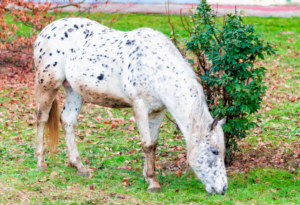
Horses that have been well-trained may fetch a higher price. Even though the breed does not require spots, the distinctive markings of Appaloosa horses are one of the characteristics which distinguish them from other breeds.
These breeds are well-known for being friendly, gentle, and loyal, making them excellent for beginners and young riders. Appaloosas are muscular, have strong legs, and weigh 950 to 1,200 pounds.
They measure from 14 to 15 hands and measure 14 to 15 hands. Their life expectancy is approximately 30 years.
This breed is thought to have originated with the Nez Perce people, who originally referred to or called the spotted horses as Palouse when they were first developed.
16). American Paint
The Price ranges from $1,000 to $5,000 on average.

Over 100,000 members of the American Paint Horse breed association from 40 countries support the distinctive American Paint Horse and its distinctive markings.
Known for its “genial” temperament, the Paint horse can be used by riders of varying abilities to achieve success in various situations.
The American Paint horses excel in Equestrian competition, are well-suited for general riding, and can be used for various tasks.
Despite their small stature and strong, balanced build, they are thought to be descended from Spanish Barb, Andalusian, and Arabian bloodlines.
Their two-tone coloring distinguishes them from other animals, and they are strong, fast, and agile while remaining calm, intelligent, and athletic. They are easy to train, and they have great stamina for their size.
17). Tennessee Walker
Price ranges from $600 to $8,500, according to recent listings on a horse sales website.

The Tennessee Walking Horse, also known as a Tennessee Walker or simply a Tennessee Walker, is distinguished by its distinctive four-beat gait.
Due to the breed’s “running walk,” originally bred as a workhorse for southern farms and plantations, it is a good performer in the show ring, but it is also well suited for pleasure riding.
Despite its exaggerated movements, it is a calm breed that accepts Western and English saddles for trail rides and stage performances.
Tennessee Walkers have appeared in several films and television shows, and they are still in use on family farms across the country.
18). Clydesdale
Price: Clydesdales can be purchased for as little as $1,000, but most of them sell for between $2,500 and $3,000. Note: In 2003, a Belgian Draught Horse stallion sold for $112,500 at the Mid-America Draft Horse Sale in Kansas City.

Clydesdales are large horses similar in size to Belgian draft horses, but they have a greater sense of grace. Aside from that, they are also extremely intelligent.
This breed is simple to ride, simple to train, and simple to fall in love with. Is there anyone who doesn’t love and enjoy the Budweiser Clydesdale commercials? Anheuser-Busch owns approximately 250 horses, making it one of the largest Clydesdale herds in the world.
The horses are kept in several different locations around the world. Clydesdales were bred for agricultural work and hauling, and they perform admirably in both of these areas.
Clydesdales are still used as drum horses by the British Household Cavalry today. They usually have extensive feathering and distinct white markings, even when they are not dyed in a particular color.
19). Lipizzaner
Price: A Lipizzaner horse can be purchased for as little as 4 to 5,000 Euros, which is a very reasonable price in today’s market.

The Lipizzan is also known as “the horse of royalty” because of its regal appearance. The “dancing horses” are distinguished by their dramatic appearance and their ability to perform synchronized movements with their riders.
It is interesting to know about the history of the Spanish Riding School, which is responsible for the mystique surrounding the Lipizzan, but the breed itself is unique.
Although horses that perform have distinctive white coats, this characteristic does not appear until they are between 6 and 10 years old.
They are born in one of three colors: grey, brown, or dark! It is really a rare breed, not only because of its history but also because of the innate intelligence, athletic prowess, and cultural history that the breed possesses.
The bond between human beings and horses dates back thousands of years, and it continues to exist today across continents and cultures.



